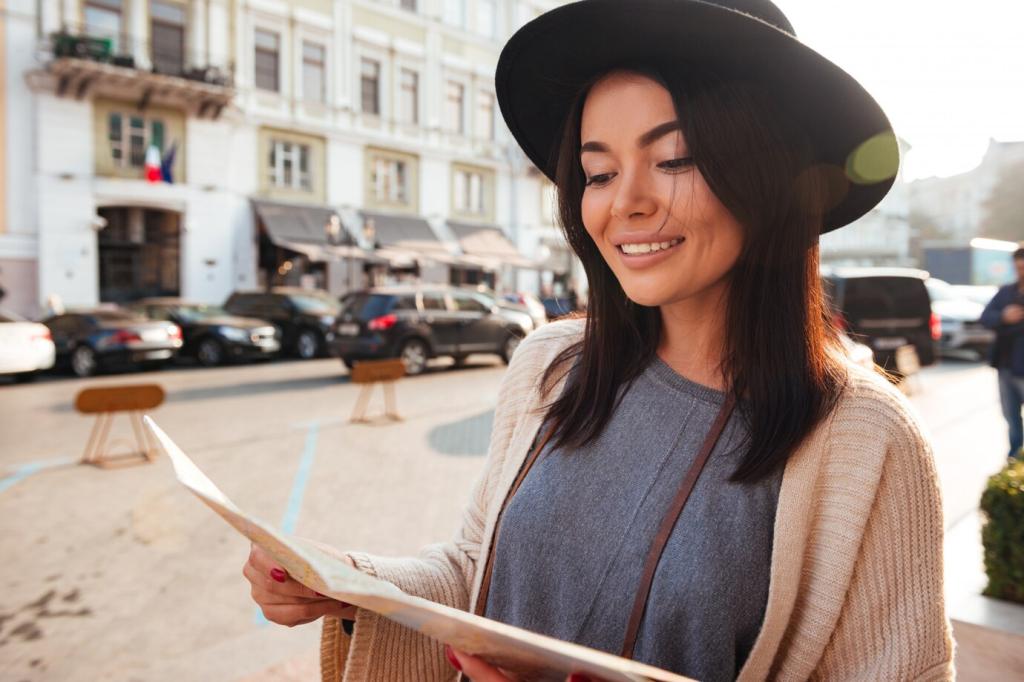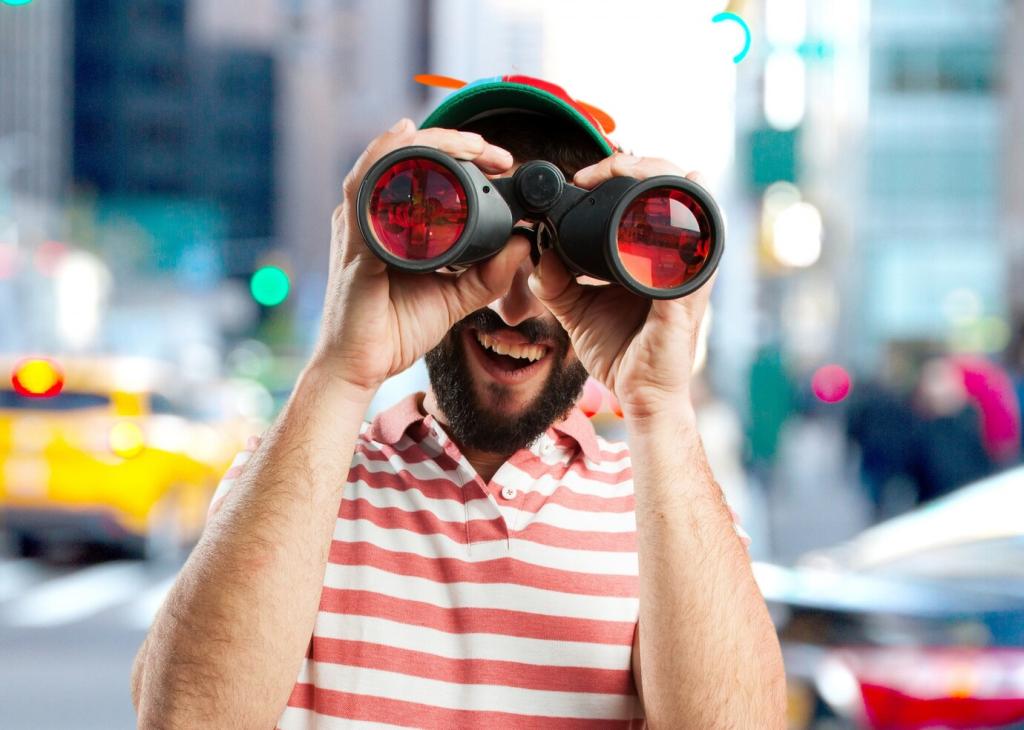Composing Chaos: Lines, Layers, and Reflections
Crosswalk stripes, guardrails, tram tracks, and scaffolding can funnel the eye toward your subject. Step sideways to align these guides like an arrow. A slight crouch often straightens converging lines, reducing distortion. Use these structures to capture the dynamics of urban life through photography with purposeful direction and clarity.
Composing Chaos: Lines, Layers, and Reflections
Seek three planes: a passing shoulder in front, your main subject mid-frame, and a billboard or skyline behind. Layers create depth and temporal tension. Pre-focus where the subject will enter. When elements click together, you tell a story that breathes, full of city air and human proximity.




